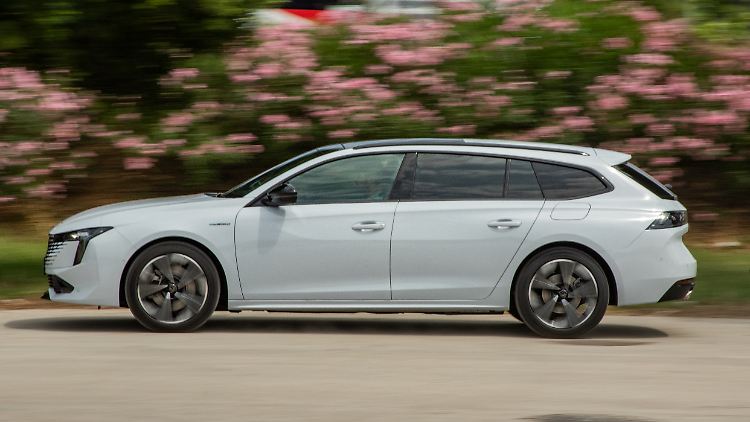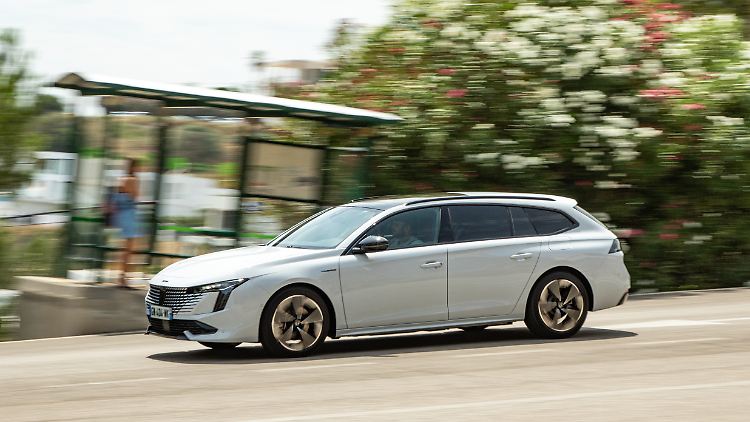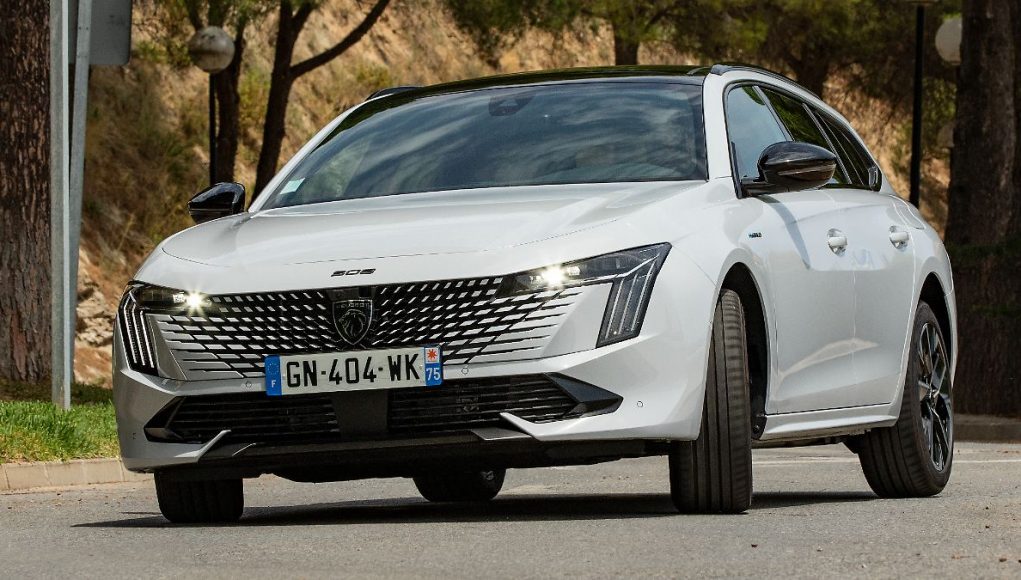Classic station wagon in the test
Peugeot 508 SW – the slightly different company car
Peugeot 508 SW – the slightly different company car
This audio version was artificially generated. More info | Send feedback
Mid-range station wagons are often used as company cars. They often appear sober and rational. The Peugeot 508 SW is different. It scores with its dynamic, unique design and extensive features. However, it also shows operating weaknesses and is rather narrow for the class.
The range of classic mid-range station wagons has thinned out in recent years. Of the remaining models, the Peugeot 508 SW is probably the most stylistically original. The dynamic cut and the futuristic cockpit don't just have advantages.


The Peugeot 508 SW is unusually low and has frameless windows.
(Photo: Peugeot)
Even before the recent facelift, the flat station wagon with its distinctive snout was an eye-catcher. The mid-life design overhaul that began in 2019 has made it even more striking; Above all, the now largely closed radiator grille mask between the narrow LED headlights makes it look as if it had just celebrated its debut. The proportions also appear youthful and powerful. At 4.78 meters, the SW is unusually low, which is also helped by the frameless windows, which are unusual in this class.
Interior height not for very tall people
So the staging is right. In practice, however, the chic cut requires concessions, such as the low entry and a rather low interior height. So if you are taller than average, you should definitely test drive the Peugeot before buying or renting it. And also test the brand-typical workplace layout. As with all other Peugeot models, the steering wheel is particularly small in diameter, so that you can see the instruments above the rim, which in the 508 are already designed as a screen. Sitting position and perspective do not always match perfectly.


The cockpit of the Peugeot 508 SW is futuristic and the steering wheel is small.
(Photo: Peugeot)
The sometimes complicated operation of the infotainment system weighs more heavily than the ergonomic weaknesses: a lot of things are done via the rather small touchscreen in the center console, which is difficult to use while driving. Although there are physical shortcut buttons for individual menu items, the one for the navigation system is missing, which makes it necessary to switch back and forth via the home menu. However, the design, workmanship and choice of materials deserve a lot of praise. The cockpit appears valuable, modern and, above all, independent.
A bit tight in the back
Given its height of 1.42 meters and width of 1.86 meters, the rear is a little too narrow, where the knees quickly come into contact with the front backrest and the middle seat is quite narrow. Despite the sweeping roofline, the head of the back seat passengers is surprisingly airy. At 530 liters (1780 liters with the rear seat backs folded down), the trunk is large and easy to use. Overall, the interior is sporty and narrow and also a bit dark. The view outside is also not particularly generous due to the small window areas, and the view to the rear is only moderately good for the driver.
Apart from the PSE sports model, the most powerful drive in the range is the larger of the two plug-in hybrids. The combination of 1.6-liter four-cylinder gasoline engine, eight-speed automatic transmission and electric drive delivers up to 165 kW/225 hp and offers superior performance that suits the large dynamic station wagon. The support from the electric motor provides an additional dose of agility, especially in city traffic and during intermediate sprints. This is matched by the chassis and steering, which are rather firm and sporty. The fact that the 508 is not a sedan chair in the French tradition was already apparent from the outside.
Little electric range


The electric range of the Peugeot 508 SW is 49 to 52 kilometers according to WLPT.
(Photo: Peugeot)
However, the 81 kW/110 hp electric vehicle only helps to a limited extent when it comes to saving CO2 and fuel; the electric range of 52 kilometers specified by the manufacturer can only be halfway achieved under ideal conditions. If you don't just roll through the city on the emission-free commute to work, if possible, you should arrive at the company parking lot after 30 to 40 kilometers. At this point you can tell that the Peugeot is middle-aged – modern plug-in hybrids can easily achieve two to three times as much. The SW is often driven in hybrid mode with an almost empty battery, where it is usually satisfied with around 6.5 to 7 liters of fuel. Not a dream value, but acceptable.
At just under 46,000 euros for the model with the 96 kW/130 hp basic gasoline engine, the Peugeot 508 SW is confidently priced. The plug-in hybrids only start at more than 52,000 euros; the powerful version is in the list in the basic “Allure” variant at a generous 53,750 euros. In return, there is already a lot of standard equipment – from LED matrix lights to infotainment with navigation to dual-zone air conditioning.
Anyone who spends 2,400 euros on the “GT” line will receive, among other things, a slightly sportier look, very good ergonomic seats, adaptive cruise control and a 360-degree camera. The most interesting point on the options list: the night vision system for 1300 euros. Technically, it worked amazingly well in the test, but the potential safety gain is only likely to be realized during frequent night-time journeys in rural areas.
Peugeot 508 Hybrid 225 e-EAT8 – technical data
- Five-door station wagon with five seats. Length: 4.79 meters, width (with mirrors): 2.08 meters, height: 1.42 meters. Wheelbase: 2.79 meters, trunk volume: 530-1780 liters
- Drive: 1.6-liter four-cylinder petrol engine, 133 kW/181 hp, maximum torque: 300 Nm at 3000 rpm. Combined with an electric motor: 81 kW/110 HP, system output: 165 kW/225 HP, maximum torque 360 Nm, eight-speed automatic transmission, front-wheel drive, battery capacity: 11.5 kW/h
- Electric range: 49-52 km according to WLPT, Vmax: 240 km/h, Vmax in electric mode: 135 km/h, 0-100 km/h in 8.2 s, standard consumption according to WLTP: 1.3-1.5 l /100 km, CO2 emissions: 30-34 g /km, power consumption: 15.4 kW/h/100 km, practical consumption: 6.6 l/100 km, power consumption: 16.5 kWh/100 km
- Price from: 53,750 euros































